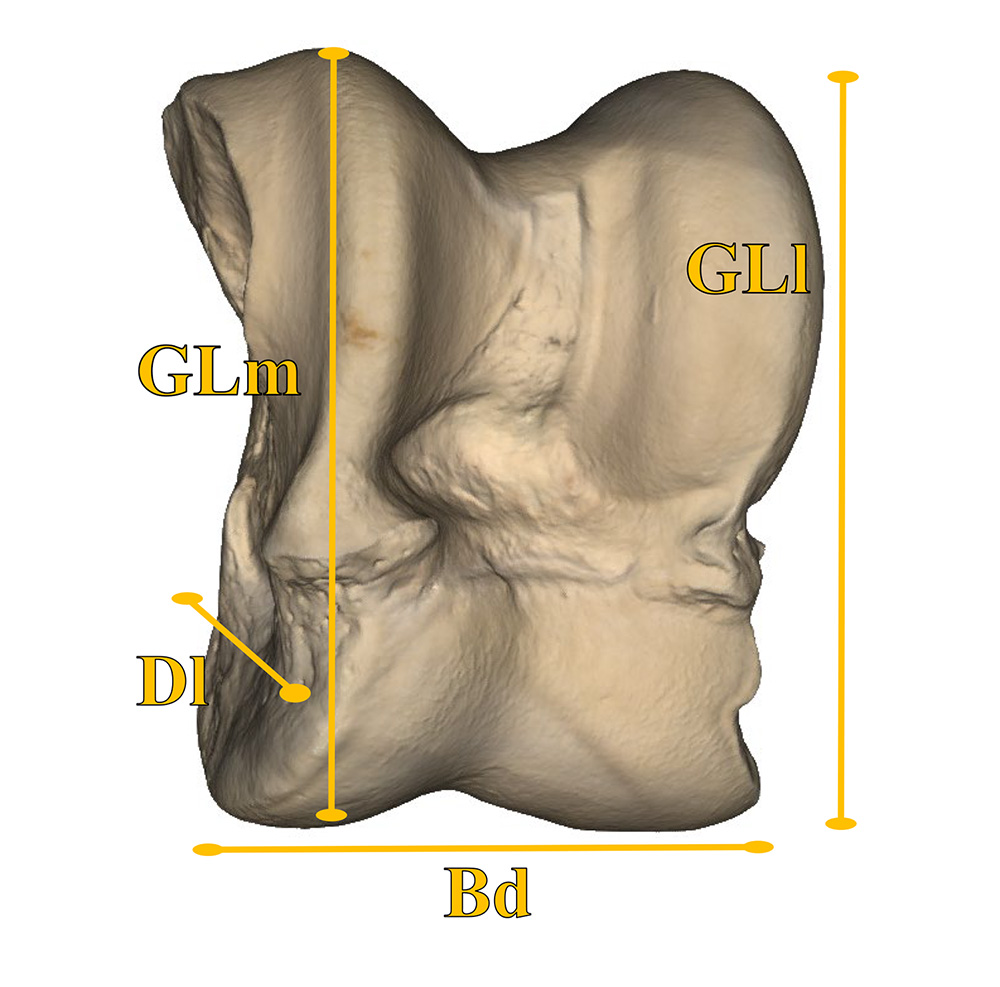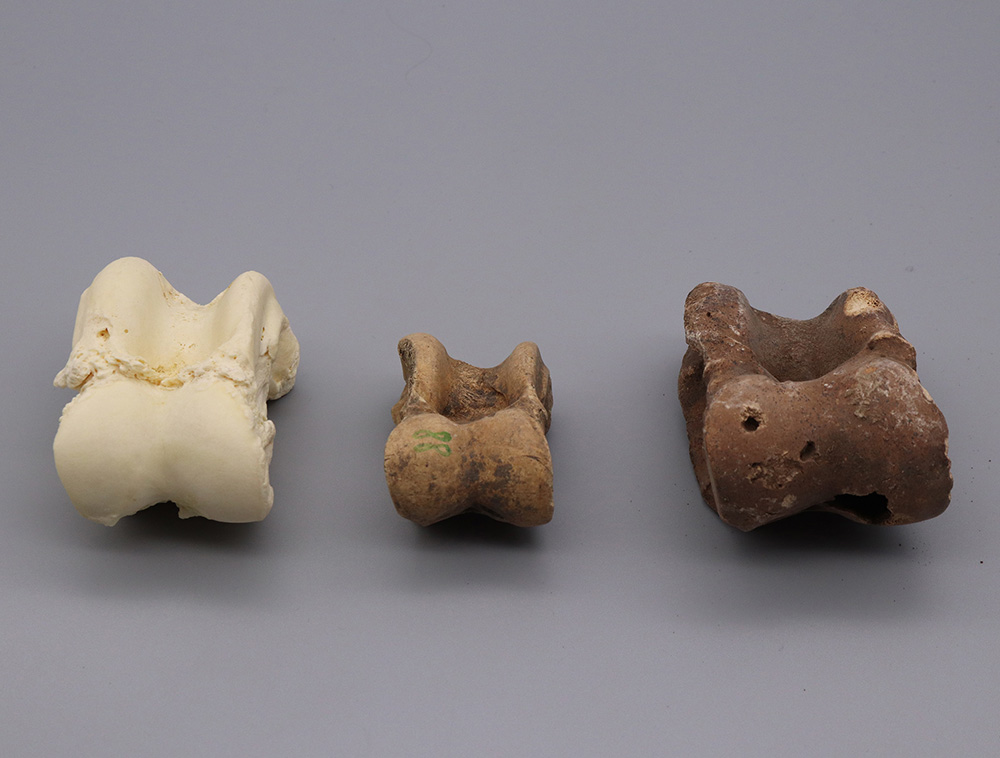Male or Female? AI enables sex determination of sheep based on their talus bone
Munich, 2024-10-08, Staatssammlung für Paläoanatomie München
SNSB researchers present an AI-based method to determine the sex of sheep with high accuracy, using only linear measurements of their talus bones. The team of archaeozoologists and computer scientists recently presented and published their results at the 20th IEEE In-ternational Conference on e-Science in Osaka, Japan.
The new study could make it much easier for researchers to determine the sex of archaeological animal finds in the future: with the help of AI-based algorithms, the sex of sheep can be determined quickly and easily – and only on the basis of four different measurements of their ankle bone, scientifically called the talus (plural tali). The advantage of the application, especially for archaeological finds, is obvious: the ankle bones of sheep or cattle are rela-tively small and compact and are therefore usually well and completely preserved in archae-ological sites. An interdisciplinary team of researchers from the Bavarian State Collections of Natural History (SNSB) and the LMU München tested various machine-learning algo-rithms for their study.
“The accuracy rate of the AI algorithms is high,” says Nadine Schüler, first author of the study and scientist at the State Collection for Palaeonanatomy Munich (SNSB-SPM) and LMU München. ”Most algorithms determine the sex correctly – up to 70 percent, some vari-ants even manage up to 90 percent.”
Traditionally, zoologists have used morphology to determine the sex of animals. In practice, they assess typical skeletal elements for each species, such as the pelvic bone in sheep and cattle. However, this approach is problematic for archaeological animal finds, where only fragments of the bones are usually preserved; this makes it difficult even for experts to dis-tinguish with certainty between male and female animals. DNA analysis would be one solution, but it is costly and also requires damage to the archaeological animal remains.
“Machine learning could be the solution, but it is rarely used in archaeozoology. In medicine AI is already used to classify human bones. Our study is a first step towards applying the methodology to archaeozoological data. The AI-based sexing method provides archaeozool-ogists with a quick initial assessment of their finds,” Nadine Schüler continues.
For their study, the researchers “trained” various AI algorithms using over 240 sheep
ankle bones for which the sex was known. The program learned to distinguish the tali of male and female animals. The “learned” method was successfully applied to 170 as-yet-unidentified sheep ankle bones from an archaeological excavation site in Mongolia.
Publication:
N. Schuler, P. Paxinos, J. Yuan, M. von Zastrov, J. Peters, P. Kröger. “There is Strength in Num-bers: A Comprehensive Study of Machine Learning Algorithms for Sex Identification on Animal Bone Remains” in 2024 IEEE 20th International Conference on e-Science (e-Science), Osaka, Ja-pan, 2024 pp. 1-10. doi: 10.1109/e-Science62913.2024.10678723
https://doi.ieeecomputersociety.org/10.1109/e-Science62913.2024.10678723
Scientific contact
Nadine Schüler
SNSB – Staatssammlung für Paläoanatomie München (SNSB-ZSM)
Kaulbachstr. 37, 80539 München
Tel.: 089 2180 6258, E-Mail: schueler@snsb.de




